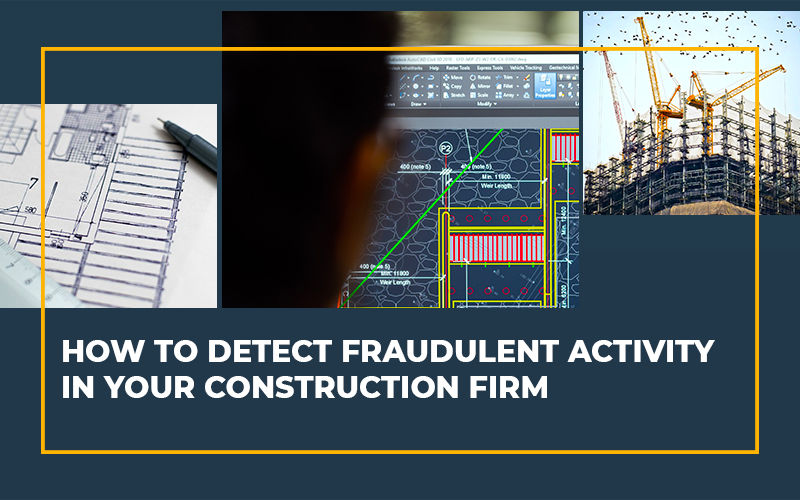While fraud may be reported in any sort of organization, 11 are particularly vulnerable given the nature of the profession. A huge number of transactions, the involvement of a variety of sellers and subcontractors, and the different employee levels can all lead to fraud. According to research, the average loss in construction fraud cases is around $227,000. Additionally, when compared to larger enterprises, a higher percentage of small to mid-size businesses report fraudulent events.
Despite the fact that fraud is a genuine problem in the construction sector with serious consequences, there are preemptive actions that firms can take in order to avoid fraud and uncover cases of fraud early to minimize damages. Before you take any action, you should first be able to recognize fraudulent activity in your business.
Studies suggest that there are five common fraudulent activities that are prevalent in the construction industry.
Collusion
Kickback scams, bid fixing when hiring subcontractors, conflicts that arise due to self-interest, corruption, and other forms of shady dealings among project managers, vendors, and subcontractors are all different forms of collusion that are common in this industry.
Billing
Modification of material while charging customers for greater quality, forgery of pay requests and charging for unfinished work, inaccurate labor rates, and so on are various types of billing fraud. These billing fraud cases are pretty common in the construction industry.
Expense Reimbursement
Fabricating invoices for compensation and using business credit cards and fuel cards inappropriately are kinds of expense reimbursement fraud. A lot of construction firm employees misuse expense reimbursement.
Noncash Misappropriation
Theft of a firm’s nonmonetary resources like worksite supplies, machinery, scrap metal, and similar things is considered noncash misappropriation.
Check and Payment Fraud
Office personnel may get the opportunity to issue checks to fictional vendors or collect payments from clients then conceal the transaction with general ledger entries. An attempt to conceal is an attempt to steal, and if your employees are hiding company transactions, they might be involved in payment fraud.
Workers who engage in such fraud and misconduct usually have had the chance, reasoning, and incentive to do so. Although a firm may have next to no influence or control over the external factors which might drive a person to conduct such fraudulent activities, managing the opportunities provided to personnel as well as other intermediaries can significantly lower the probability of fraud in your organization. If you suspect any such activities are going on in your firm, it is time that you learn how you can reduce the likelihood of fraud in your firm.
How to Eliminate Fraud from Your Business
Once you are able to identify fraudulent activity in your firm, it is time to figure out way to eliminate the prospect of it from your business. The best way to do that is by implementing and maintaining strong internal processes. By guaranteeing that in-office internal procedures comprise a fair and well-thought-out division of activities, the possibility of an employee falsifying expense reimbursements, manipulating checks and payments, or misappropriating cash revenues is considerably reduced. It is important to leave a paper trail when buying equipment or having the used construction equipment serviced.
The possibility of collusion among parties can be reduced by establishing the right number of permits and control for bidding, subcontractor and vendor selection, change request clearance, etcetera. Proper governance of the estimation and payment application procedure will help to prevent and identify problems like falsification of finished work, exaggerating labor or material expenses, repeat billing, and so on. In effort to secure the firm, restrictions should be introduced in all sectors.



 1400 Broadfield Blvd, Houston, TX 77084,
USA.
1400 Broadfield Blvd, Houston, TX 77084,
USA.